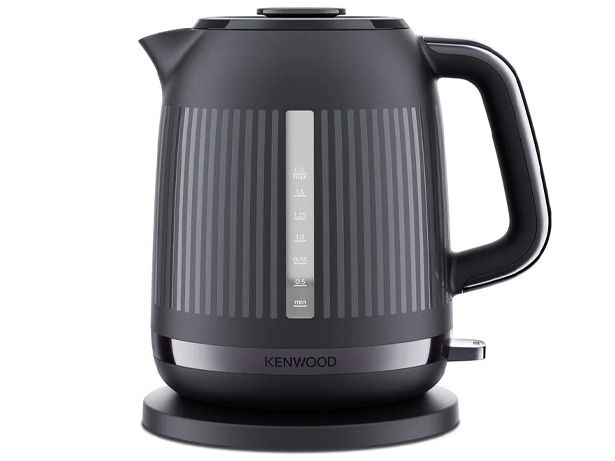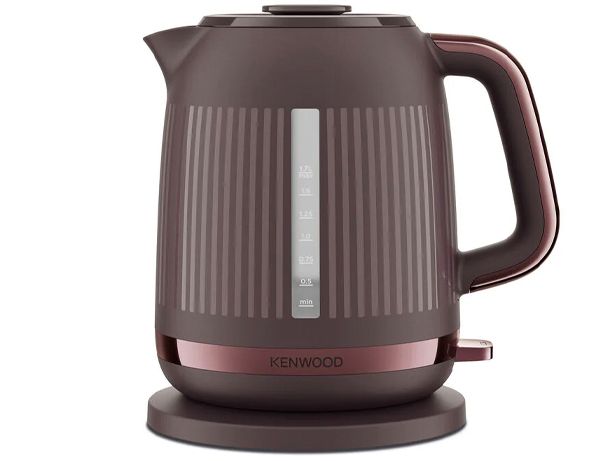By clicking a retailer link you consent to third-party cookies that track your onward journey. If you make a purchase, Which? will receive an affiliate commission, which supports our mission to be the UK's consumer champion.
How to remove limescale from your kettle

No one enjoys cleaning out their kitchen appliances, but it's necessary to remove limescale from your kettle regularly to keep it in the best condition for as long as possible and to ensure that you or your family aren't picking flakes out of their tea.
There are many different ways you can keep your kettle limescale-free, including a few ingredients you may already have tucked away in your fridge or under your kitchen sink.
Here, we explain what limescale actually is and share five effective methods of removing even the most stubborn patches.
Head to our best kettles to see which models we recommend and which come with decent limescale filters
Be inspired to make home improvements. Sign up for our Home newsletter – it's free monthly
What is limescale and where does it come from?

Limescale is a hard chalky substance that's mainly made up of calcium carbonate, which is commonly found in rocks and seashells. It's off-white in colour, but can also be grey, pink or reddish-brown in some cases.
If you live in a hard water area, you'll notice that limescale builds up in your appliances quite quickly. This is because your water supply contains large amounts of calcium and magnesium, which builds up inside your kettle and forms a scaly coating if left untreated.
Limescale occurs completely naturally and is totally harmless to consume. Sure, your tea may not taste the best if it's full of floating flakes, and in particularly bad cases it may even cause a slightly bitter aftertaste, but it's not dangerous.
Some sources try to claim that drinking hard water causes health problems such as kidney stones, but this is untrue. In fact, the main minerals found in hard water (calcium and magnesium) are usually found in the bottled water sold at your local supermarket.
Limescale killed your kettle? See our guide to reliable kettle brands before you buy a replacement.
Video: how to descale your kettle with vinegar
Limescale dissolves very easily when treated with a mild acid, and white distilled vinegar is a cleaning cupboard staple in many homes across the country. It's cheap, hassle-free and can be used to tackle a variety of stubborn messes.
Watch the video or follow these steps below to ensure your kettle is nice and sparkling.
- Simply measure out equal parts white vinegar and tap water, then fill your water around three quarters full with the mixture.
- Bring it to the boil and leave to stand until it's completely cooled, before rinsing it out several times. You can use a long-handled scrubbing brush to remove any particularly stubborn patches if necessary.
- Once all of the limescale is gone, fill your kettle up with clean water, boil it and empty it again.
- Repeat this process two to three times to remove any traces of vinegar and prevent your tea from tasting funny.
If your kettle is particularly scaly, you can also add a small amount of bicarbonate of soda to the vinegar and water mixture to help shift any rogue flakes. You should only need to add about a teaspoon, but keep an eye on your kettle to make sure it doesn't bubble over.
How to descale your kettle with citric acid

If you don't have any vinegar at home or simply can't stand the smell or taste of it, you may opt to use an alternative natural cleaning product such as citric acid. You can pick this up at most DIY shops and it's just as good at removing stubborn limescale.
All you have to do is:
- Boil a half-full kettle, switch it off and unplug it, then add one to two tablespoons of citric acid.
- Leave this to work its magic for around 15 to 20 minutes, then pour out the water.
- Rinse out the kettle a couple of times before you use it again.
As we mentioned with the vinegar method above, you may find that you still need to do an extra bit of scrubbing to shine up the inside of your kettle, but the citric acid should shift the majority of the limescale.
How to descale your kettle with lemon juice

The acid in lemons acts as a natural bleach, making it a great option for cleaning lots of things around your home. It's antibacterial and antiseptic, too, so you can avoid using any harsh chemicals if you prefer.
To effectively remove the limescale from your kettle using lemon juice, you may be better off buying it pre-squeezed to save yourself time and money. You'll be able to find it in most large supermarkets.
- Simply fill your kettle with 50/50 lemon juice and water, and bring it to the boil.
- Let it sit for about 30 minutes.
- Once it's cooled completely, empty it down the sink and give it a good rinse before making a drink.
How to descale your kettle using descaling powder

You can pick up descaling powder in most large supermarkets and it usually comes in a pack of at least two single-use sachets. It's often cheaper if you buy in larger quantities and is widely available online.
The exact method will vary depending on the brand you purchase, but it's normally as simple as popping a sachet into a recently boiled kettle and waiting 10 minutes for it to remove the limescale.
As with other methods we've mentioned, make sure you give your kettle a good rinse (potentially even boiling and emptying it again) before you use it to make a drink. Descaling powder is slightly stronger than most natural cleaners, so always err on the side of caution.
How to descale your kettle using descaling liquid

Descaling liquid is a useful product to have in your cleaning cupboard as it can be used to freshen up a range of other household items such as showers, steam irons and coffee machines, as well as kettles.
Some brands claim to dissolve stubborn limescale in as little as two minutes, but you should always take these promises with a pinch of salt. The method will be largely the same as the descaling powder, but be sure to always wear gloves and read the instructions thoroughly before starting.
Head to our round-up of easy-to-use kettles to find out which ones we found particularly simple to use and clean in our lab tests



